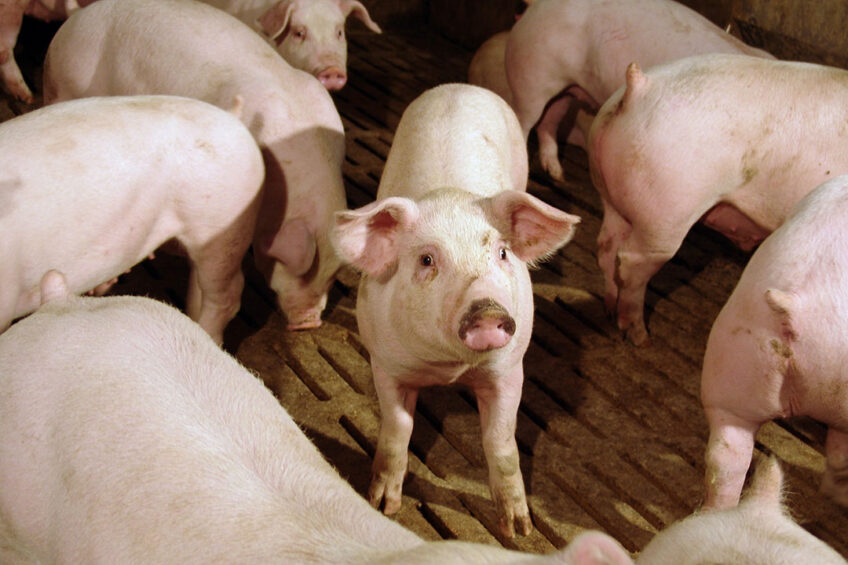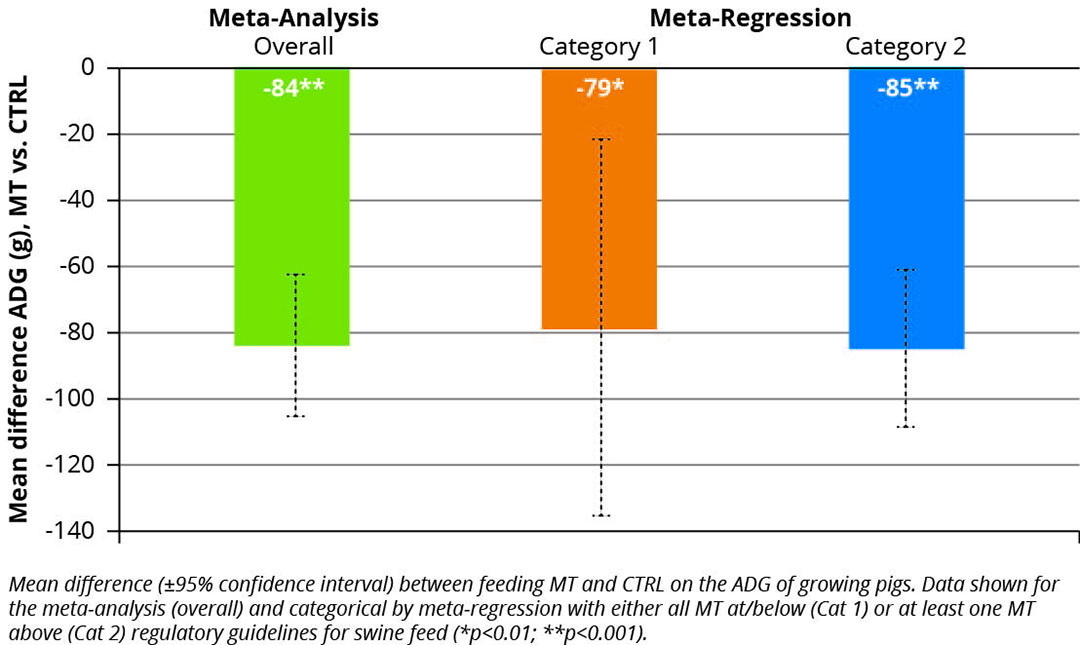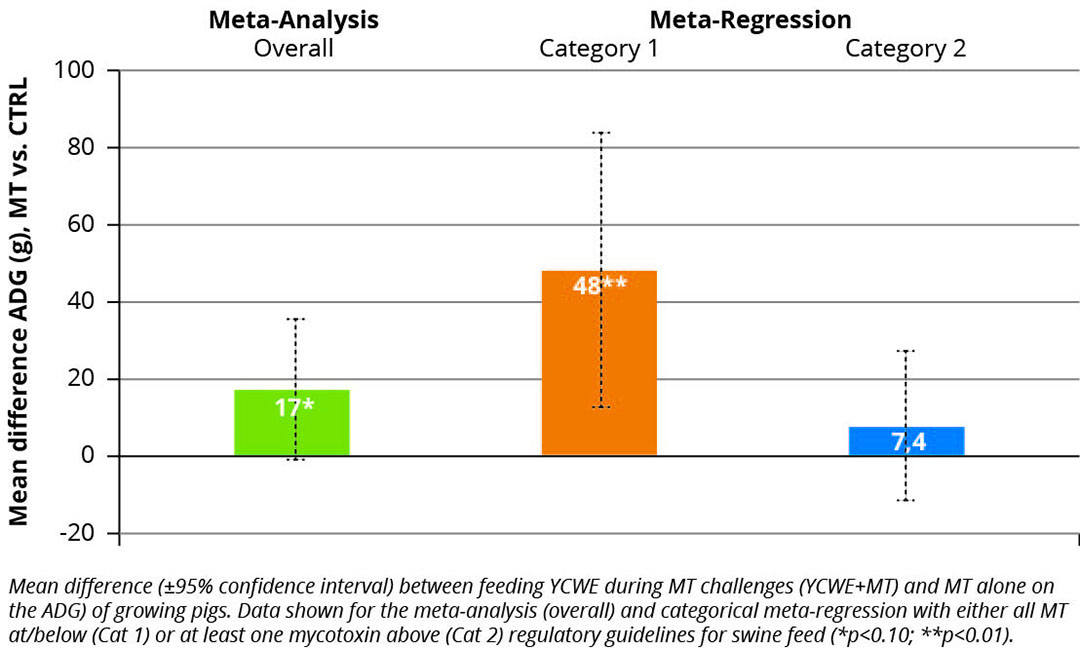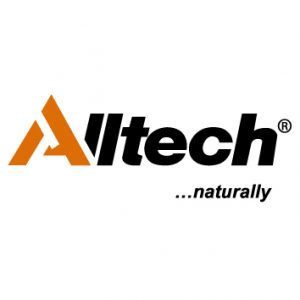Understanding mycotoxin presence in pig feeds

What do different mycotoxin levels mean for pig performance and mitigation strategies?
Analysis of global pig feed conducted by the Alltech 37+ analytical laboratory reveals the ubiquitous nature of these unwanted contaminants. 100% of samples contained mycotoxins, with an average of 8.1 mycotoxins per sample (284 samples, June 2023 to January 2024). The presence of these mycotoxins in feed can have negative effects on the growth, feed intake, feed efficiency, gut health and immunity of pigs. We typically associate animal impacts with higher concentrations of mycotoxins, i.e. those above regulatory guidelines, but a growing body of literature is showing that lower or chronic levels of mycotoxins can also have negative effects.
In the set of pig feeds referenced above, although 91% of samples contained deoxynivalenol (DON), 91% of these had concentrations under the EU regulatory guidelines for pigs of 900 ppb. Equally, 64% of these feed samples contained fumonisins, with 99% falling under EU guidelines of 5 ppm. This demonstrates that not only is the presence of mycotoxins likely, but lower concentrations that are consumed over longer periods of time are probable, creating the environment for negative impacts on farm productivity and profitability.
Mycotoxin management strategies
Despite the ever-present challenge of mycotoxins, there are various management strategies from field to feed that can help to minimise mycotoxin risk. One management method that can directly protect the animal from mycotoxins is the use of a nutritional solution such as yeast cell wall extract (YCWE), a product rich in complex insoluble carbohydrates that can bind mycotoxins in vitro, ex vivo, and in vivo. Numerous papers have been published that investigate the use of YCWE in pigs exposed to mycotoxins. However, an overall conclusion on these findings could be helpful in making more informed decisions regarding the management of mycotoxins.
Uncovering this topic, a meta-analysis with meta-regression was recently published. The aim was to quantify the overall outcome related to the use of YCWE during mycotoxin challenges and to investigate how mycotoxin concentration influences the effects on pigs and the response to YCWE.
Outline of the research
This meta-analysis evaluated the effect of YCWE (Mycosorb, Alltech Inc., KY, USA) use during mycotoxin challenges, based on data collected from 23 studies (30 different treatments) carried out over 20 years (2002–2022) and from 10 different countries. Reported mycotoxins present in these trials included aflatoxins, ochratoxin A, DON, T-2 toxin, fumonisins, zearalenone and fusaric acid. The impact of mycotoxins alone (MT) versus controls without mycotoxins (CTRL), and YCWE versus MT and CTRL, on pig performance were assessed through changes to average daily gain (ADG), average daily feed intake (ADFI) and gain-to-feed ratio (G:F).
Although an overall summary of MT and YCWE effects was provided, more important was the meta-regression analysis conducted to understand the difference in responses by mycotoxin concentration. Research trials were divided into categories, where all mycotoxins were at/below EU and U.S. regulatory guidelines (Category 1) or at least one mycotoxin was above regulatory guidelines (Category 2).
How did lower mycotoxin concentrations impact pig performance?
Results of the meta-regression analysis show that even when all mycotoxin levels were below EU/U.S. regulatory guidelines, pigs fed mycotoxins had significantly lower ADG by -79 grams (Figure 1, p<0.001) compared to CTRL-fed pigs. This reduction in weight gain could influence final market weight, thus requiring producers to sell pigs at a reduced weight or continue to feed these animals for additional days, either of which could alter farm profitability. Again, this reduction in gain was observed in the research even when all analysed mycotoxins were below guideline levels.
Figure 1 – Effect of feeding mycotoxins on the average daily gain of pigs.

To counteract the effects of mycotoxins, the research trials assessed in this meta-analysis used YCWE. Collectively, when pigs consumed YCWE during lower-level mycotoxin challenges, results showed that ADG was significantly (Figure 2, p<0.001) increased, by 48 grams over MT. Furthermore, ADG was not only increased from MT but was significantly similar to the gain of CTRL-fed pigs.
Figure 2 – Effect of feeding yeast cell wall extract during mycotoxin challenges.

How do higher mycotoxin concentrations impact pig performance?
When at least one mycotoxin was above guideline limits, the loss in pig ADG increased to -85 grams (Figure 1, p<0.001) along with a significant reduction in ADFI of -166 grams in contrast to CTRL. In this category, mycotoxin content ranged from just above guideline limits to levels well in excess, leading to the conclusion that the effects of mycotoxins on pigs could be much greater than the average reported above.
At these higher mycotoxin challenges, management of the negative effects of mycotoxins on pigs may be more challenging, but it is still possible. Based on the trials that assessed a range of mycotoxin concentrations above guideline limits, results of the meta-regression showed there to be a numerical increase in pig ADG by 7 grams (Figure 2) when YCWE was included in the ration, and a tendency (p=0.06) for an increase in ADFI by 25 grams when YCWE was included.
Conclusions from the research
This meta-analysis with meta-regression highlights clearly that mycotoxin consumption by pigs at levels both below and above regulatory guidelines could negatively affect the growth performance of pigs. As many samples tested for mycotoxins contain lower levels or levels below advisory limits, it is particularly important to realize that pig growth and health can still be impacted even at these so-called safer levels.
The use of YCWE during mycotoxin challenges enhanced the ADG of growing pigs over mycotoxin challenges alone. Furthermore, at lower mycotoxin challenge levels, the ADG of pigs fed YCWE was returned to that of the pigs not consuming mycotoxins. Collectively, this new information is useful for swine nutritionists and producers on managing mycotoxins through inclusion of YCWE, with particular support for its use when mycotoxins are at levels commonly experienced out in the field. As such, the use of YCWE in animal diets could be seen as one of the management strategies that can restore optimal levels of performance and profitability in pig operations during a mycotoxin challenge.











